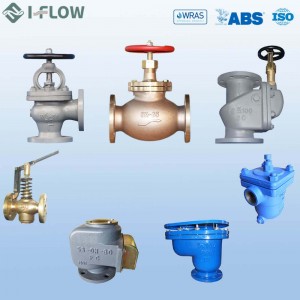Choosing the correct marine valve is essential for ensuring safe, efficient, and reliable operation aboard ships and offshore systems. With countless valve types and applications in the marine industry — from ballast systems to cooling circuits, fuel lines, and fire protection — making the right selection depends on several critical factors.
1. Understand the Application and Medium
Every marine system handles a specific type of fluid (water, oil, fuel, steam, etc.) at different pressures, temperatures, and flow rates.
Ask yourself:
-
①What type of medium is flowing through the valve? (e.g., seawater, fresh water, oil, fuel, gas, steam)
-
②Is the medium corrosive, viscous, or flammable?
-
③Is it a critical safety system (e.g., fire suppression, bilge, fuel shutoff)?
Tip: For corrosive or saltwater systems, choose bronze, brass, or stainless steel valves.
2. Select the Appropriate Valve Type
| Valve Type | Best For |
|---|---|
| Ball Valve | Quick shut-off, minimal pressure drop |
| Gate Valve | Full open/close, low-pressure systems |
| Globe Valve | Flow regulation or throttling |
| Butterfly Valve | Space-saving, large flow control |
| Check Valve | Preventing backflow |
| Safety Valve | Overpressure protection |
| Storm Valve | Sanitary discharge control |
3. Consider Material Compatibility
Marine environments demand corrosion-resistant materials due to constant exposure to saltwater, humidity, and temperature changes.
-
①Bronze/Brass – Good corrosion resistance, common in seawater systems
-
②Stainless Steel – Excellent durability and resistance, ideal for high-pressure or corrosive fluids
-
③Cast Iron – Cost-effective, but suitable for non-corrosive fluids only
-
④Duplex/Super Duplex Steel – High-performance alloys for extreme applications
Tip: Always match the valve material with the piping and medium to avoid galvanic corrosion.
4. Evaluate Pressure and Temperature Ratings
-
①Check the PN (Pressure Nominal) or Class rating
-
②Confirm operating temperature range
Valves must meet or exceed system requirements and comply with classification society standards.
5. Ensure Classification Society Approvals
All marine valves must meet international marine safety standards and be approved by relevant Classification Societies, such as:DNV (Norway).ABS (USA).BV (France).Lloyd’s Register (UK).CCS (China)
Tip: Ensure the manufacturer provides certification documents for each valve.
6. Choose a Trusted Marine Valve Manufacturer
Choose a marine valve supplier that:
-
①Has decades of industry experience
-
②Offers customization for your application
-
③Provides certified, tested, and documented valves
-
④Supports after-sales service and technical consultation
Qingdao I-FLOW is a leading marine valve manufacturer with over 10 years of experience. We provide a full range of certified marine valves, including gate valves, globe valves, butterfly valves, check valves, storm valves, and more — serving vessels in over 40 countries with CE, DNV, ABS, and LR certifications.
Post time: Jul-16-2025

